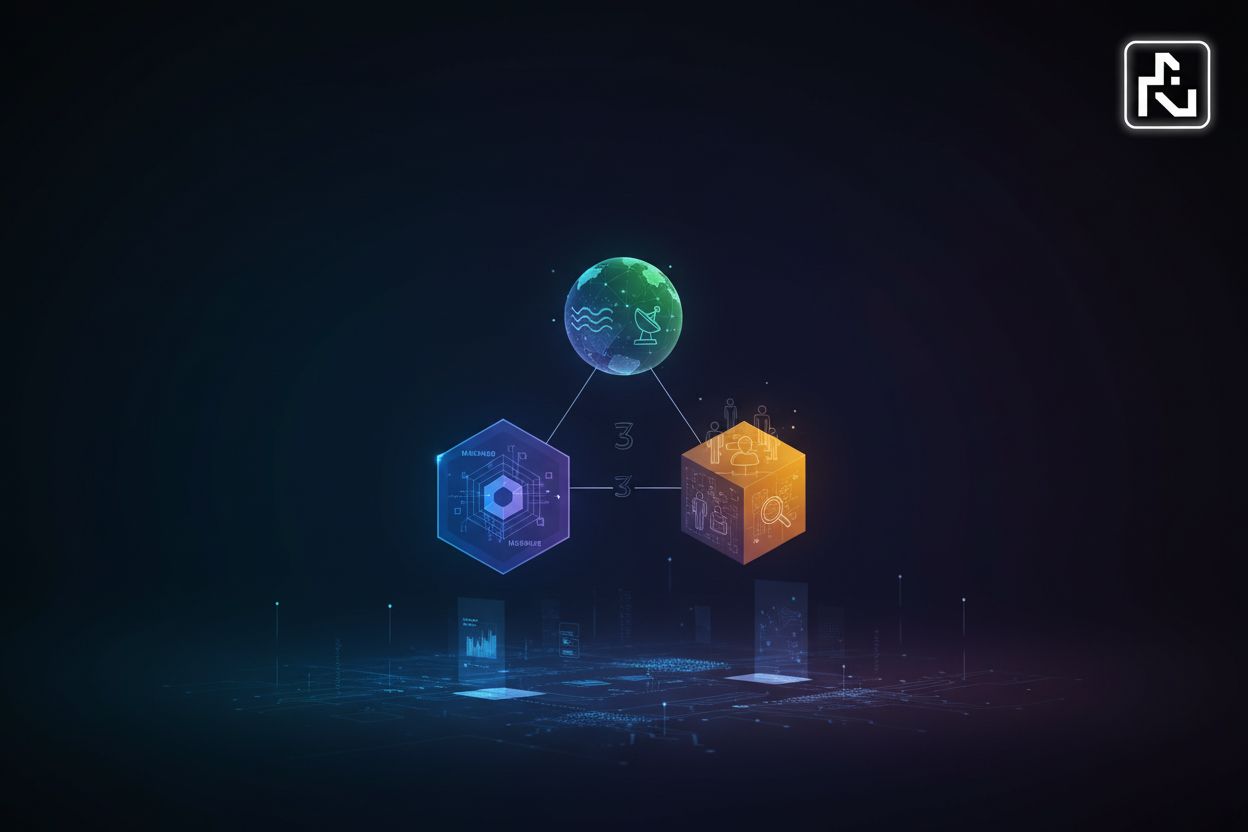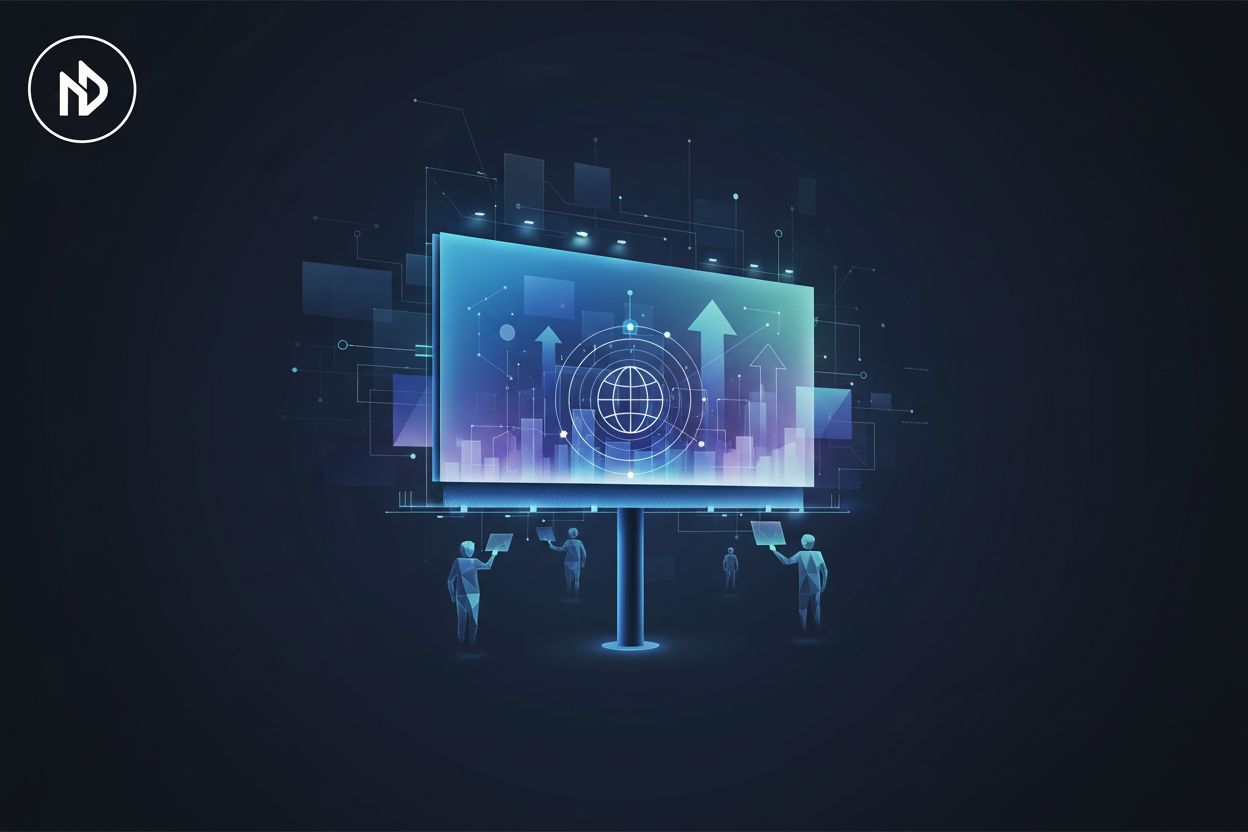Unlocking Product Development Potential with Digital Twin Technology
Introduction: The Rise of Digital Twins in Product Development
Digital twin technology is changing how products are developed, but what exactly can it do for brand managers and CMOs? Imagine creating a virtual version of a product before it even exists, allowing you to test and refine it in real time.
Digital twins are virtual replicas of physical products or systems. They capture real-time data through sensors and IoT devices, creating a dynamic digital representation. This allows for continuous monitoring, analysis, and simulation, offering insights that were previously impossible to obtain.
- Definition: A digital twin mirrors a physical asset, process, or system.
- Real-time data: Sensors and IoT devices feed live data into the digital twin.
- Monitoring, analysis, and innovation: Digital twins enable continuous performance assessment and open doors to new design possibilities.
Digital twins offer tangible benefits for brand managers and CMOs focused on product development. They accelerate time-to-market, improve product quality, and enhance customer insights.
- Faster time-to-market: Digital twins facilitate rapid prototyping and virtual testing.
- Improved product quality: Real-time analysis identifies performance bottlenecks early.
- Enhanced customer insights: Simulating product use provides a deeper understanding of customer needs.
- Reduced development costs: Virtual testing reduces the need for expensive physical prototypes.
The digital twin market is experiencing rapid growth, driven by advancements in IoT, AI, and cloud computing. Companies across various industries are increasingly adopting this technology to gain a competitive edge.
- The global digital twin market is projected to reach €242.11 billion by 2032, exhibiting a CAGR of 39.8% Fortune Business Insights - this growth is fueled by the increasing need for efficient product development processes.
- Approximately 70% of technology leaders actively invest in digital twin initiatives McKinsey - highlighting the widespread recognition of their value.
As we delve deeper, we'll explore the specific ways digital twins are reshaping product development processes.
How Digital Twins Transform the Product Development Lifecycle
Digital twins are rapidly transforming the product development lifecycle, offering unprecedented opportunities to refine designs and processes. But how do these virtual replicas enhance each phase, from initial concept to final production?
Digital twins enable virtual prototyping and simulation, allowing teams to explore multiple design options without the expense of physical prototypes. This accelerates the design process.
- By simulating real-world conditions, designers can test and refine their concepts in a risk-free environment. They can identify potential flaws early on, saving time and resources.
- For example, an aerospace company can use digital twins to optimize aircraft design by testing aerodynamics and structural integrity in various virtual scenarios. As noted earlier, almost 75% of companies have already adopted digital-twin technologies.
Digital twins excel at simulating real-world conditions and extreme scenarios, enhancing product reliability and performance. This reduces the need for physical testing and validation.
- Virtual testing allows engineers to evaluate new solutions under a wide range of lifelike conditions including unusual and extreme situations.
- This leads to improved product quality and reduces the risk of failures in the field.
Digital twins improve testing and validation by allowing new solutions to be evaluated in a wide range of lifelike scenarios.
Digital twins optimize production processes and workflows by providing real-time monitoring of equipment performance. This enables predictive maintenance and minimizes downtime.
- By analyzing data from sensors, manufacturers can predict when equipment might fail and schedule maintenance proactively. This approach reduces costly breakdowns and ensures smooth operations.
- For instance, a manufacturing plant can use digital twins to optimize batch sizes and production sequences, improving efficiency and reducing waste.
By transforming each stage of product development, digital twins bring significant advantages. Next, we'll explore the specific ways digital twins enhance collaboration and communication across teams.
Benefits of Digital Twins for Product Development
Did you know that digital twins can significantly cut product development costs? These virtual replicas offer a range of benefits that impact the bottom line and speed up innovation.
Digital twins offer significant cost savings throughout the product development lifecycle. By simulating real-world scenarios, companies can reduce the need for expensive physical prototypes and testing.
- Reduced prototyping costs: Digital twins enable virtual prototyping, allowing teams to explore multiple design options without incurring the expense of building physical models. As mentioned earlier, an aerospace company can use digital twins to optimize aircraft design by testing aerodynamics and structural integrity in various virtual scenarios.
- Lower maintenance expenses through predictive analytics: By monitoring the performance of virtual assets, digital twins can predict maintenance needs and prevent costly downtime. This predictive capability minimizes unexpected failures and optimizes maintenance schedules.
- Increased operational efficiency: Digital twins provide real-time insights into operational processes, enabling companies to identify and eliminate inefficiencies. This leads to streamlined workflows and optimized resource allocation.
Digital twins can drastically reduce the time it takes to bring a product to market. By facilitating faster design and testing cycles, companies can stay ahead of the competition and meet customer demands more quickly.
- Faster design and testing cycles: Digital twins enable teams to test and refine designs in a virtual environment, accelerating the overall development process. Virtual testing allows engineers to evaluate new solutions under a wide range of lifelike conditions including unusual and extreme situations.
- Streamlined development processes: With real-time data and simulation capabilities, digital twins streamline various stages of product development, from initial concept to final production.
- Reduced time spent on rework and revisions: Early identification of design flaws through virtual testing minimizes the need for costly rework and revisions later in the development cycle.
Digital twins enable continuous improvement by providing data-driven insights into product behavior under various conditions. This leads to enhanced product reliability, durability, and overall quality.
- Improved product reliability and durability: By simulating real-world conditions, digital twins help identify potential weaknesses and optimize designs for enhanced reliability.
- Better understanding of product behavior under various conditions: Virtual testing allows engineers to assess product performance under a wide range of scenarios, leading to a deeper understanding of its capabilities and limitations.
- Data-driven insights for continuous improvement: Real-time data from digital twins provides valuable insights that inform ongoing product enhancements and refinements.
Digital twins provide deeper insights into product behavior. Engineers can use digital-twin models to monitor the state of any part of the system at any time and to trace complex interactions between product elements.
By reducing costs, accelerating time-to-market, and enhancing product performance, digital twins are transforming product development. Next, we'll delve into how digital twins enhance collaboration and communication across teams.
Industry Applications: Real-World Examples
Digital twins are no longer a futuristic concept; they're actively reshaping industries. But how are these virtual replicas being applied in the real world to drive tangible results?
In manufacturing, digital twins are revolutionizing production lines. They optimize processes and minimize downtime. By creating a virtual model of a manufacturing plant, companies can predict equipment failure and schedule maintenance proactively. For example, a metal fabrication plant used digital twins to determine optimal batch sizes, improving efficiency.
Healthcare is also seeing innovative applications of digital twins. Virtual patient models are enabling personalized treatment plans. Digital twins can simulate surgical procedures and medical device performance. This allows doctors to test different treatment options.
The aerospace industry uses digital twins to monitor aircraft performance and optimize maintenance schedules. Virtual testing and simulation are crucial for designing new aircraft. For instance, the U.S. Air Force saved money on wind tunnel tests by using digital twins.
By providing real-world examples across diverse sectors, it's clear that digital twins are more than just a buzzword. They're a powerful tool for innovation and efficiency. Next, we'll investigate how digital twins enhance collaboration and communication across teams.
Implementing Digital Twin Technology: A Strategic Approach
Implementing digital twin technology can seem daunting, but a strategic approach ensures a smooth and effective transition. Where do you even begin with integrating these virtual replicas into your organization?
Before diving in, evaluate your current infrastructure and data capabilities.
- Determine if your existing systems can handle the influx of real-time data required for digital twins. Consider whether your data storage, processing power, and network bandwidth are sufficient.
- Identify key areas where digital twins can make the most impact. Focus on processes that are critical to your business and where improvements could yield significant benefits. This might include product design, manufacturing, or supply chain management.
- Define clear, measurable goals for your digital twin implementation. What specific outcomes do you want to achieve? For example, reducing prototyping costs by 20% or decreasing time-to-market by 15%.
Choosing the right tools and collaborators is essential for success.
- Select software and hardware solutions that align with your specific needs and budget. Consider factors such as scalability, ease of use, and integration capabilities.
- Cloud-based platforms offer the scalability and accessibility needed for digital twin technology. They enable distributed teams to collaborate effectively and manage large volumes of data.
- Partner with experienced digital twin providers who can offer guidance and support. Companies like Citrusbug Technolabs - a company that offers comprehensive solutions tailored to specific needs.
Assembling the right team is crucial for managing and leveraging digital twins.
- Recruit data scientists, system engineers, and domain experts who possess the necessary skills. Look for individuals with experience in data analytics, modeling, and simulation.
- Establish clear roles and responsibilities within the team. Define who will be responsible for data collection, model creation, simulation, and analysis.
- Provide comprehensive training and ongoing support for digital twin technologies. Ensure that your team is equipped with the knowledge and skills needed to effectively use and maintain the system. As Tek Leaders - a global digital engineering company - notes, "Digital twin development requires professionals including data scientists, system engineers and domain experts."
By taking a strategic approach to implementation, you can harness the power of digital twins. Next, we'll explore how digital twins enhance collaboration and communication across teams.
Overcoming Challenges and Ensuring Success
Digital twin technology faces several hurdles, but overcoming these ensures successful implementation and maximum ROI. What are the biggest challenges and how can you navigate them?
One major challenge is ensuring data accuracy and consistency. Digital twins rely on real-time data, so data integrity is essential.
- Integrating data from multiple sources can be complex. Different systems often use different formats, requiring robust integration strategies. For example, a smart city digital twin might need to integrate data from traffic sensors, weather stations, and building management systems.
- Managing large volumes of data effectively is also crucial. You'll need scalable storage and processing capabilities, often leveraging cloud-based solutions.
Protecting sensitive data is paramount. Digital twins often handle proprietary or personal information, making them attractive targets for cyberattacks.
- Implementing robust cybersecurity measures is vital. This includes encryption, access controls, and regular security audits. Industries must adhere to data privacy regulations like GDPR in Europe or HIPAA in healthcare.
- Compliance with cybersecurity standards, such as GDPR, ensures sensitive data remains protected from unauthorized access.
Implementing digital twins often requires significant organizational changes. Addressing resistance to change is essential.
- Fostering a digital culture encourages collaboration and knowledge sharing. Teams need to be comfortable working with new technologies and data-driven insights.
- Providing training and support for employees helps them adapt to new workflows and tools. This ensures they can effectively use the digital twin to improve processes.
As McKinsey notes, a successful digital-twin program is a change management effort, requiring commitment from senior management and support from a strong program management team.
Addressing these challenges head-on sets the stage for successful digital twin adoption. Next, we'll explore how digital twins enhance collaboration and communication across teams.
The Future of Digital Twin Technology
Digital twins are already transforming product development, but what does the future hold? As technology advances, digital twins will become even more powerful and integrated into various aspects of our lives.
Expect to see deeper integration of artificial intelligence (AI) and machine learning (ML).
- AI will enable more advanced simulations and predictive analytics, allowing for better decision-making.
- Digital twins will move toward autonomous decision-making based on real-time data, optimizing processes without human intervention.
- Self-learning digital twins will continuously improve their accuracy and effectiveness.
Another key trend is increasing interoperability between different digital twins.
- Collaboration and data sharing between different digital twins will allow for simulation of complex environments, such as entire supply chains.
- This will enable optimization of entire systems, providing a holistic view of operations.
- For example, a city's digital twin could interact with a manufacturing plant's digital twin to optimize logistics and reduce waste.
Digital twins will find a home in the metaverse.
- Integration of digital twins into metaverse environments will enhance visualization and interaction with virtual replicas.
- This opens up new opportunities for product development and customer engagement. Imagine testing a new car design in a virtual world with real-time feedback from potential customers.
As digital twin technology evolves, it promises to revolutionize product development, making it faster, cheaper, and more efficient. By embracing these advancements, companies can unlock unprecedented levels of innovation and competitiveness.







